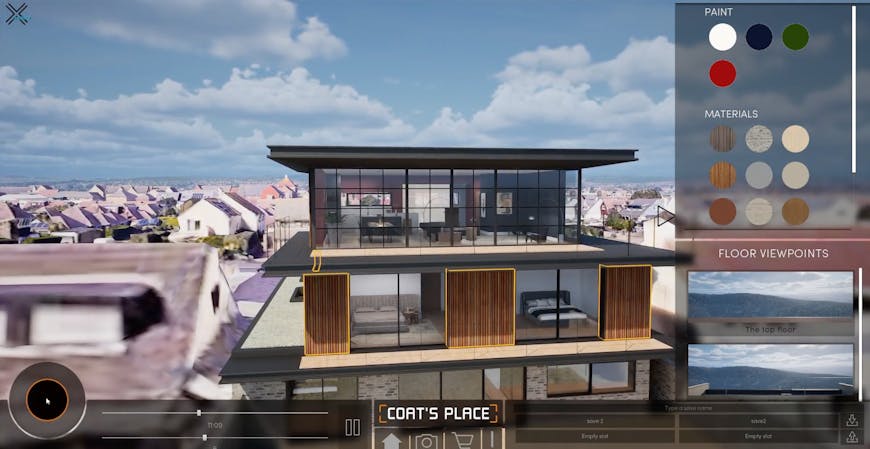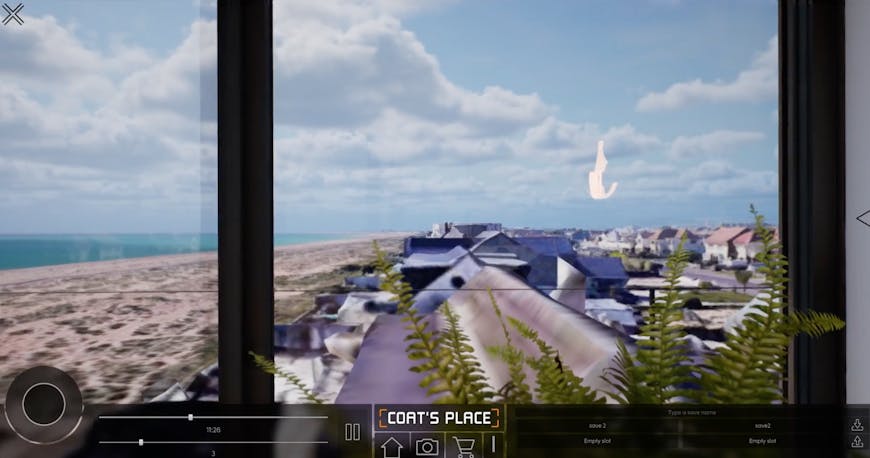APlace Visualizes and Customizes Architecture with Cesium for Unreal
Purchasing a home can be a business decision, a necessity, or a labor of love. As real estate developers and professionals market those properties, APlace makes people feel at home in dwellings that don’t exist yet by visualizing and customizing architecture in Cesium for Unreal.
With realistic, precise visuals of to-be-built homes, APlace is powered by Photorealistic 3D Tiles and Cesium for Unreal. Courtesy APlace.
APlace is a web-based interactive 3D marketing platform for off-plan properties—land on which construction has not yet begun—enabling buyers to tour virtual homes prior to building. In addition to “stepping inside” these homes, users can adjust interior and exterior colors and treatments, place and rearrange 3D models of furniture (and order the real thing from suppliers), and take in real-world views and natural lighting via accurate geospatial context.
The United Kingdom, home to the APlace team, has stringent planning laws; applications can be difficult, and visuals are often required. To show realistic, precise visuals of to-be-built homes, applicants can provide 3D experiences from APlace, powered by Photorealistic 3D Tiles and Cesium for Unreal. Buy-in from housing authorities and clients is more solid because of accurate surroundings.

APlace users can adjust interior and exterior colors and treatments, place and rearrange 3D models of furniture, and take in real-world views and natural lighting via accurate geospatial context. Courtesy APlace.
Prior to using Cesium, APlace had been using high dynamic range images (HDRI) for a project’s surroundings. Integrating the images was a lengthy process, and the quality was not up to the standards of founder Llewellyn Thomas and lead software developer Louis Harris, a Cesium Certified Developer. APlace uses Datasmith files for the 3D models of homes being designed, loaded directly into Unreal Engine. With Cesium for Unreal, APlace georeferences the 3D models to ensure they’re accurately placed and streams Photorealistic 3D Tiles via Cesium ion, adding real-world data to potential living spaces. Photorealistic 3D Tiles were designed for city blocks and citywide scale, with data for more than 2,500 cities. APlace’s immersive tours and design functions are made available on the web via pixel streaming.
“Cesium makes this product viable commercially. Without Cesium we’d have to build the context, which is time consuming and a lot of manual labor. As our go-to-market nears, Cesium has increased our pace by 50%,” said Thomas.

APlace adds real-world data to potential living spaces. Courtesy APlace.
APlace is set to launch March 22, 2024, and the team plans to include procedurally generated landscaping and information about nearby transportation, schools, and shops in the future.
Save time on developing your AEC and real estate apps with a free Cesium ion account.